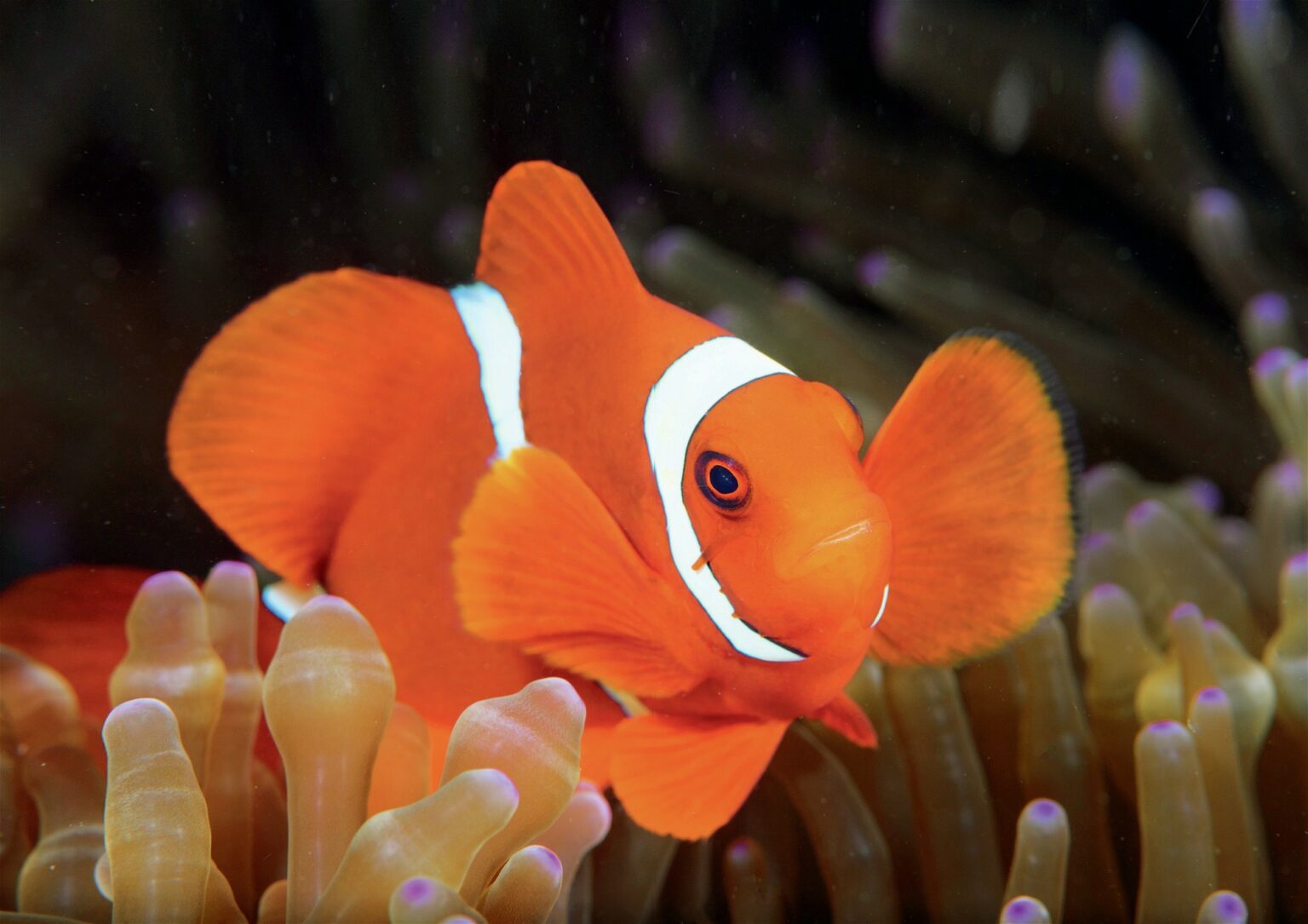Scuba Diver North America Editor Walt Stearns continues his passage through the Flores Island group on the Arenui luxury liveaboard.
Photographs by Walt Stearns
Two sites in Lewoleda Bay illustrate the typical reef profiles of the region. An initial visit to Padang Pasir showed what to expect, with an expanse of white sand bottom and scattered heads of coral that divided two reef fronts. One reef face had a consistently sloping profile, while the second started as a slope that transitioned to a mini wall.
Did you know?
Despite its short name, the Alor islands hide a long list of splendors, from fascinating underwater wonders up to the unique culture of the highland people. The rainy season lasts from October to April and the best time for diving is during the dry season.
The nearby site of Tanjung Bacatang is a wall that drops from around 6m straight down to 36m, with the face of the wall pockmarked with crevices and ledges adorned with soft corals, sea fans and large sponges.
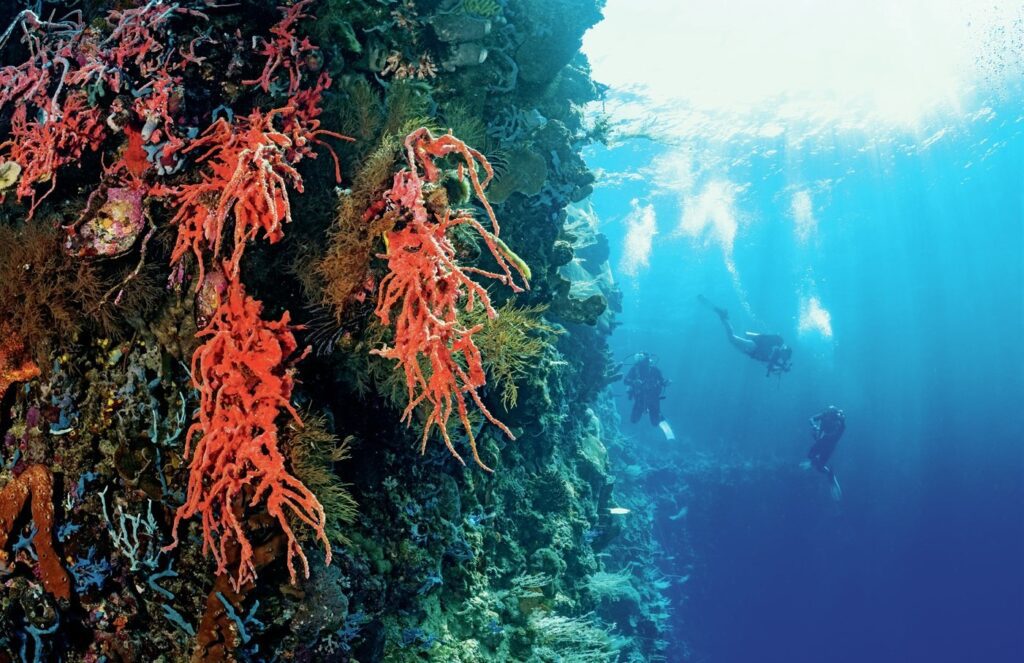
Returning to Padang Pasir for a night semi-muck dive served up a list of small, interesting critters. Zig-zagging our way across beige sand and inspecting each rock or debris along the way revealed among other things – a tiny cockatoo waspfish, two bobtail squids, candy crabs hiding in the soft coral, a blue-ribbon eel in the full adult shades of blue and yellow, one small, black frogfish along with a stargazer, which failed to successfully conceal itself in the sand. Quite an assembly for one dive!
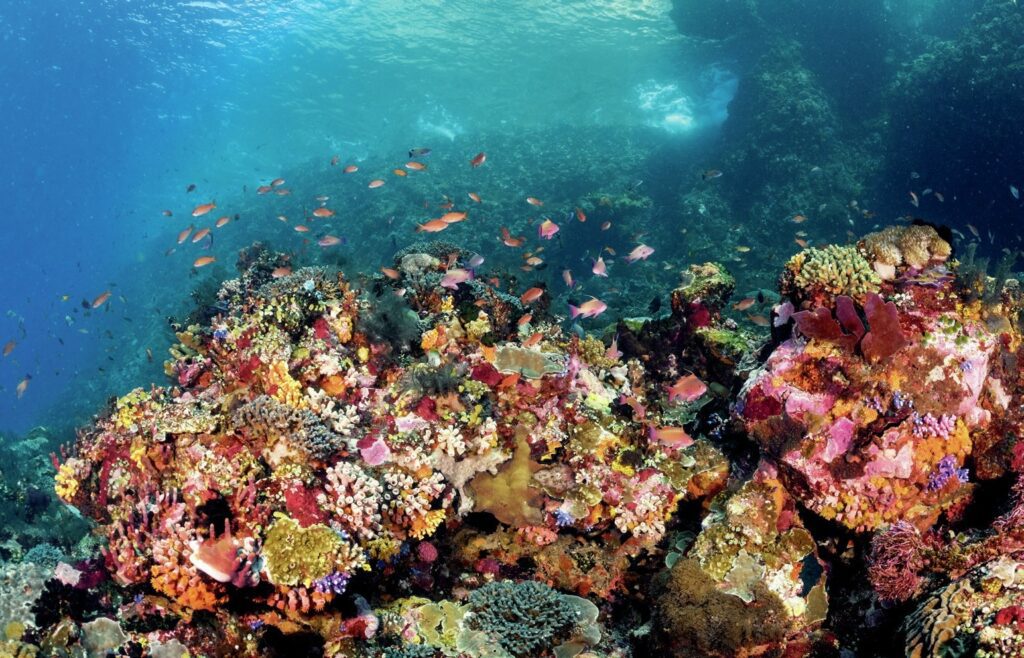
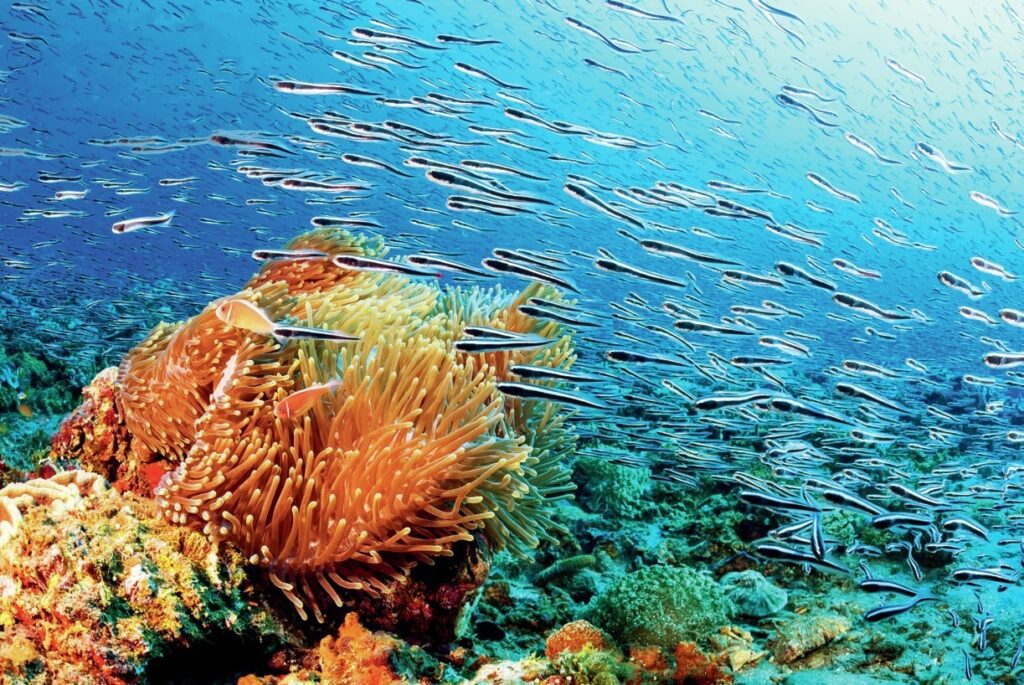
By the fourth day of the trip, we had reached the small volcanic island of Palau Pura in the straits between Pantar Island and the western side of Alor. This area includes the region’s best-known dive site, Clown Valley, also known as Anemone City. Our itinerary didn’t include a stop, however, as I learned that sometime during the past two years, the massive colony of anemones that once populated the site had disappeared.
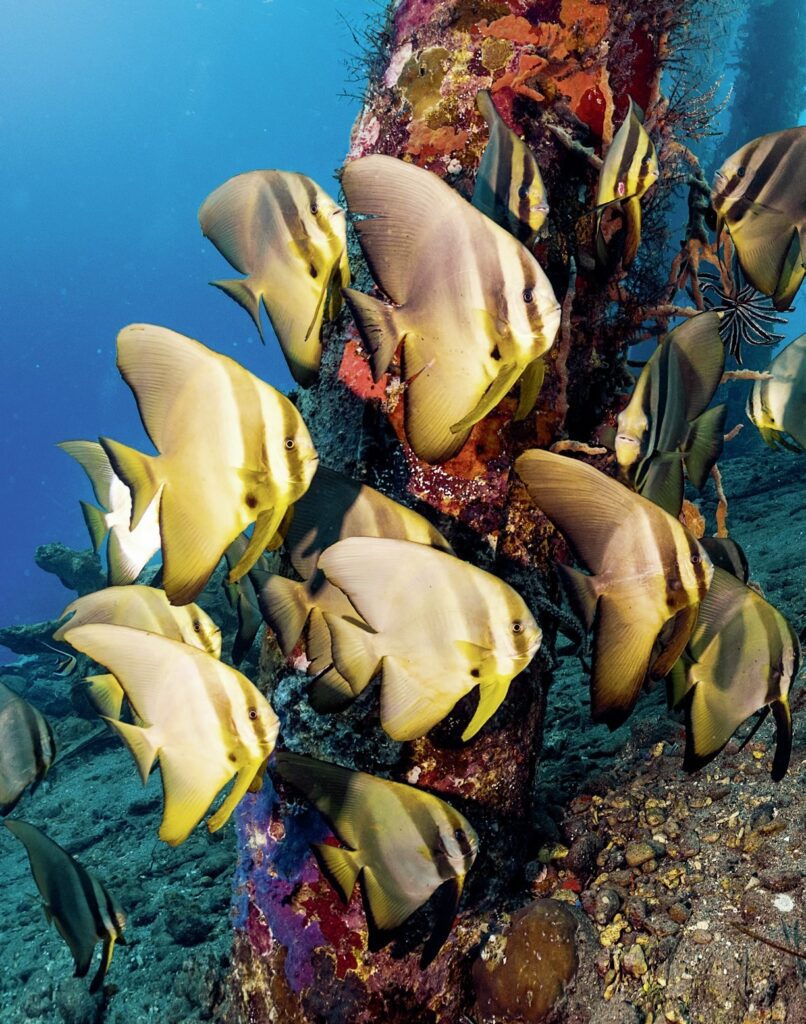
But even without Clown Valley, Alor’s Pantar Straits region delivered rewards at sites with profiles ranging from easy sloping reefs to dramatic sheer drop-offs. Where the island’s shoreline juts outward creating a Tanjung (Indonesian for corner) tidal currents can turn swift, as I found out at a site called Three Crosses off Pantar Island. This site’s name comes from a trio of crucifix statues erected on shore right above the corner section of the island. Based on the vigorous currents that wash over the reef, ‘Holly Mother of Tanjungs’ might have seemed more appropriate.
But currents notwithstanding, Three Crosses was one of my favourites as it was as lively as it was beautiful.
Here the reef shows more of the island’s volcanic origin more clearly. Steep profiles start at the surface and take dramatic downward turns punctuated with large buttresses of rock that create an obstacle course of sorts that amplifies the currents flow in one place while affording a lee shelter in another. From the top to passing the 30m mark, almost every square inch of the volcanic rock is covered in various species of encrusting corals and sponges, complemented by clouds of colourful anthias. Adding energy to the scene were schools of fusiliers, triggerfish and jacks in a constant state of motion.
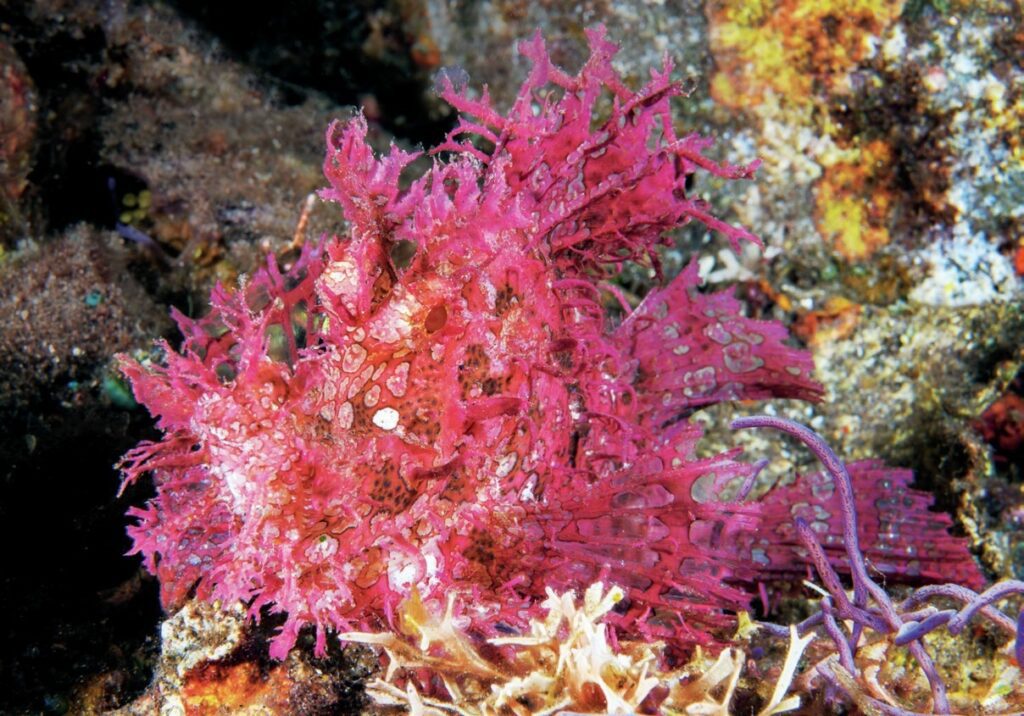
Another highlight of the trip was Reta Wall near Yan Village on Pura Island. Here, the reef began as a shallow hard coral garden densely populated with staghorn and tabletop corals that ran from shore to depths of 9m before taking a vertical descent. Below the edge, the wall was welldecorated with soft corals and sponges all the way down to a second shelf at 30m-33m.
The nearby shores of Yan Village turned out to be an excellent muck dive. Referred to as Yan’s Muck, the site offered a mix of khaki-coloured sand, rubble, scattering of small hard corals and sponges scattered across a valleylike profile that begins at 3m and bottoms out down past 21m. Among many other critters I found here was a brilliant lavender lacy Rhinopias (Rhinopias aphanes).
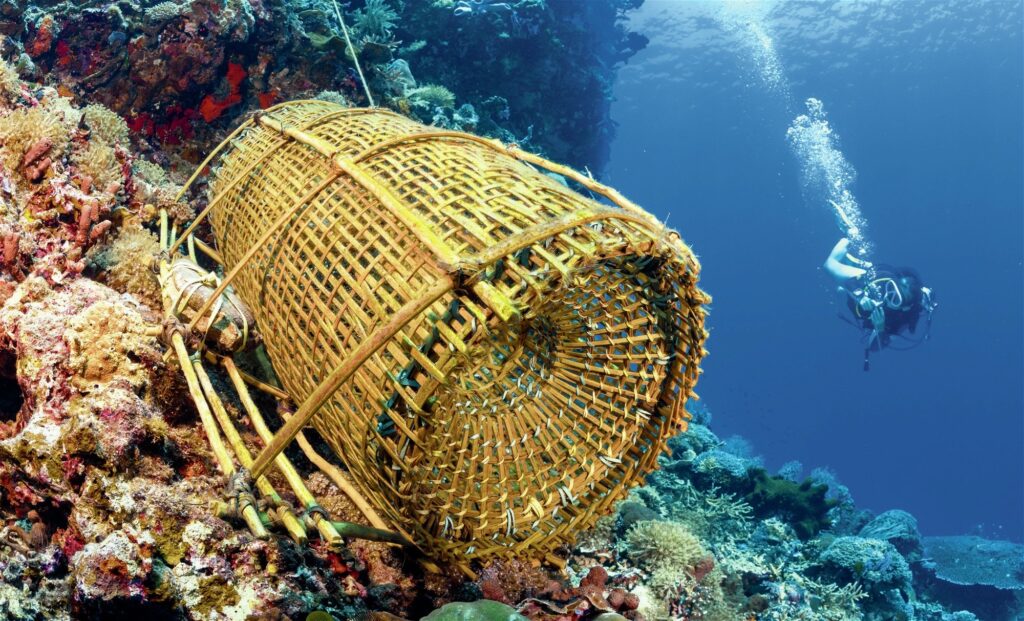
For something different, there was the Frog and Catfish, a large concrete jetty at Pantar Island’s Kadir Village, which was used by local ferries. Diving this site is sometimes dependent on the local ferry schedule and permission from the authorities. The site’s name was derived from the number of giant frogfish and the schools of catfish often found here. During the afternoon dive, got a few choice shots of the concrete support columns decorated with soft corals and sponges and surrounded by a sizable school of spadefish. Coming back to the pier in the early evening produced a variety of nudis, small cuttlefish and crustaceans.
My description so far is a mere taste of the Arenui’s tenday / nine-night itinerary through the eastern Flores Island group to Alor. I made a total of 29 dives during this trip, and each one was as memorable as the last. Every bit as memorable as the diving was my time aboard the Arenui.
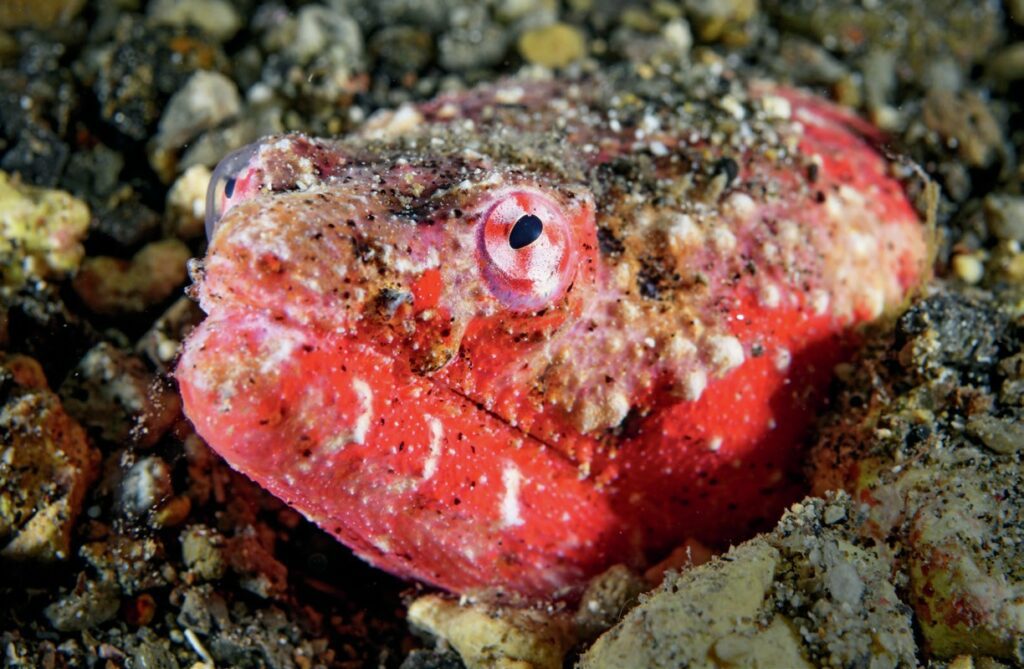
Travelling to the Arenui
Getting to where the Arenui is based during both their Komodo and Alor season requires a short (two-hourplus) flight from Bali-Denpasar (DPS) to Maumere (MOF) via one of Indonesia’s regional carriers, Lion Air. At the time of my trip in July 2022, there was no direct flight service available to Maumere, which entailed making a stop and plane change in Kupang or Makassar.
This article was originally published in Scuba Diver ANZ #54. Subscribe digitally and read more great stories like this from anywhere in the world in a mobile-friendly format. Link to the article
